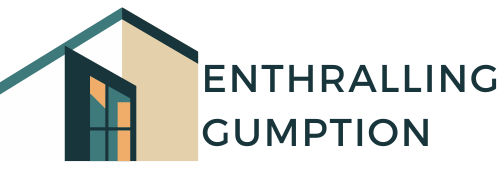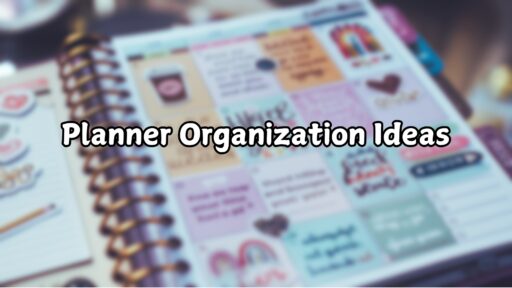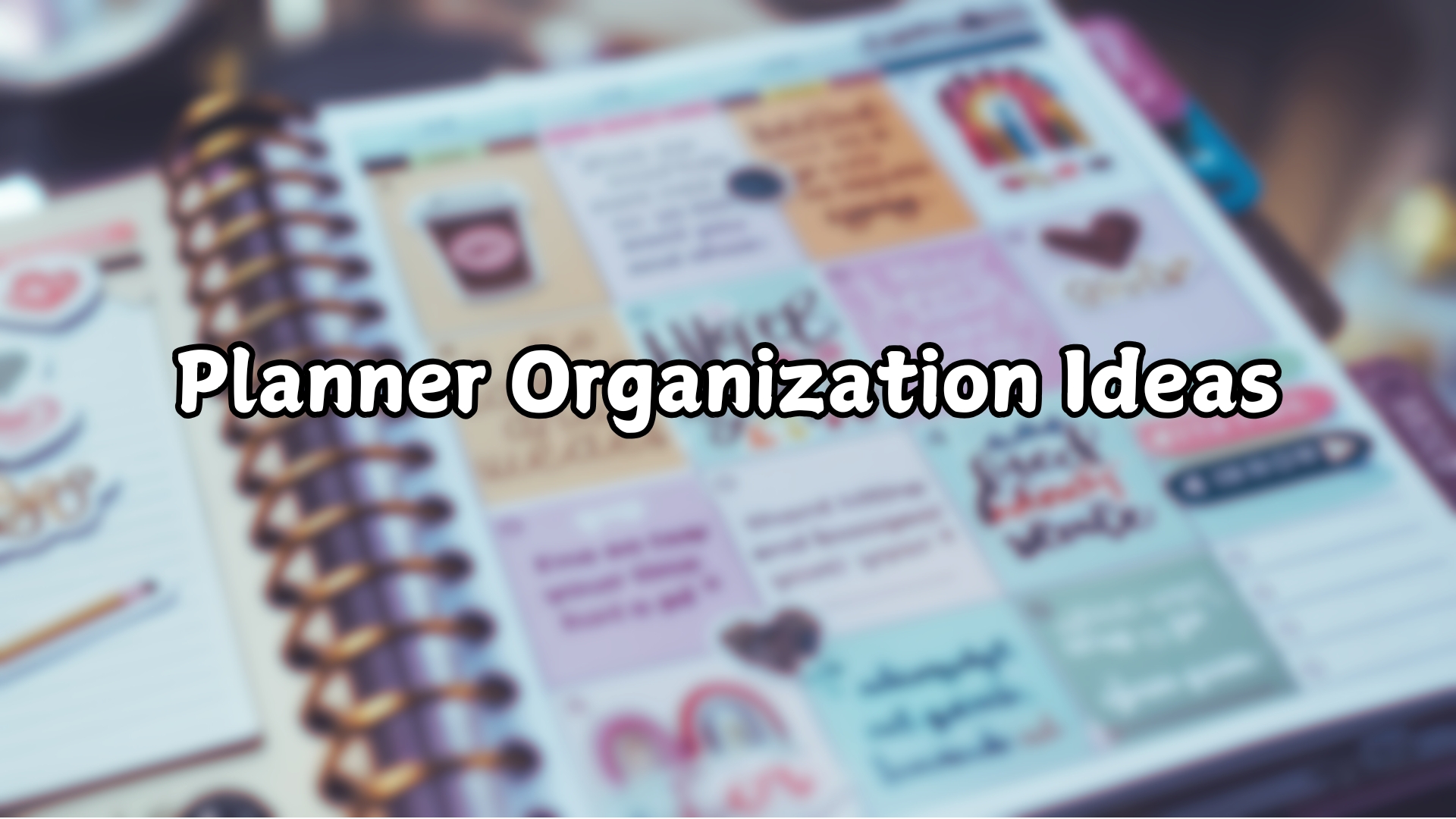Being busy can be hard to handle, whether you are a student, a working professional, or someone who finds daily life challenging.
A good planner can be your best friend when staying on track and getting things done.
This blog post will share simple ways to organize your planner to help you manage tasks, set goals, and use your time well.
With these basic tips, you can make your planner a useful tool that helps reduce stress and boosts your success. Let’s start making your days more productive!
Why Should You Organize a Planner?
Using a planner can transform the way you manage your time and responsibilities. It helps create a structured routine, keeps you focused, and minimizes unnecessary stress. Here’s how organizing a planner can benefit you:
- Time management: Schedule tasks and allocate time for each activity.
- Task prioritization: List important tasks first to complete them on time.
- Staying organized: Keep track of appointments, deadlines, and events in one place.
- Reducing stress: Avoid last-minute rushes by planning.
- Productivity: Stay focused and accomplish more in less time.
- Setting goals: Outline short-term and long-term objectives with clear steps.
- Better memory retention: Writing things down helps reinforce important details.
- Record keeping: Maintain completed tasks and progress log for future reference.
Tips for Smart Planner Organization
1. Pick the Right Planner for You

Since choosing the right planner is the first step to staying organized. Planners come in different types, such as bullet journals, printed and digital planners. The best planner fits your lifestyle and makes it easy to track your tasks.
Key Points to Remember:
- Pick a planner with a layout that fits your schedule.
- Choose a size that is easy to carry or gives enough writing space.
2. Recommended Planner Types

Since choosing the right planner is essential, listing some popular planners (like bullet journals, digital apps, or structured planners) with brief pros and cons could help readers make an informed choice.
For Example:
- Bullet Journals: Best for creative people who like flexibility.
- Digital Planners (Google Calendar, Notion, etc.): Great for tech-savvy users.
- Traditional Planners (Pre-printed): Ideal for those who prefer structure.
3. Setting Up Your Planner

Once you have a planner, setting it up properly makes it easier to use. Creating daily, weekly, and monthly planning sections helps you organize your tasks.
Key Points to Remember:
- Write down important dates like birthdays, deadlines, and meetings.
- Use different colors for work, family, and personal activities.
4. Breaking Down Goals

Big goals can feel overwhelming, but a planner can help you break them into smaller, manageable steps. Writing down goals makes it easier to track progress.
Key Points to Remember:
- Create a list of yearly goals and break them into monthly and weekly steps.
- Make daily to-do lists to complete small tasks toward your bigger goals.
5. Managing Time Wisely

Using a planner helps you use your time better so you don’t feel rushed. Assigning time for different tasks ensures that everything gets done on time.
Key Points to Remember:
- Set aside time for important tasks so they don’t pile up.
- Leave extra time between tasks in case something unexpected happens.
6. Make Planning a Habit

A planner works best when used every day. Checking and updating your planner regularly helps you stay organized and on track.
Key Points to Remember:
- Spend five minutes each night planning the next day.
- Check your planner every morning to stay on schedule.
7. Make Your Planner Fun to Use

Planning doesn’t have to feel like hard work. Adding colors, stickers, and personal notes can make your planner more fun and exciting.
Key Points to Remember:
- Use stickers or washi tape to highlight important tasks.
- Write down favorite quotes or positive messages for motivation.
8. Weekly Reflection Section

A reflection section helps you see how your week went. Writing down what worked and what didn’t can help you plan better in the future.
Key Points to Remember:
- Write down three things you accomplished each week.
- List one thing you want to improve for the next week.
9. Emergency Task List

Unexpected tasks can mess up your schedule, but a backup task list helps you stay on track. Keeping a list of urgent tasks ensures that important things get done first.
Key Points to Remember:
- Keep a small section for last-minute or urgent tasks.
- Highlight the most important tasks so they are easy to find.
10. A “No-Plan” Day

Planning is helpful, but having a free day once in a while is also important. A “no-plan” day gives you time to relax and recharge.
Key Points to Remember:
- Pick one day a month where you leave the planner blank.
- Use this day to rest, do creative work, or complete unfinished tasks.
11. Common Planning Mistakes to Avoid

Many people make mistakes when using a planner, such as overloading their schedule or not reviewing their plans. Keeping your planner simple and flexible makes it more effective.
Key Points to Remember:
- Avoid writing too many tasks in one day to prevent stress.
- Always leave space for changes and unexpected tasks.
Wrapping It Up
Getting more done and feeling less stressed is possible with a well-organized planner. Following these simple steps can turn your planner into a helpful tool that makes life easier.
Remember, the key is to start small and build good habits over time. Your planner is there to help you, not add stress to your day.
Ready to start organizing your planner? Pick one tip from this guide and try it today. Share your planning success stories with us in the comments below!
And don’t forget to sign up for our weekly newsletter – we’ll send you more helpful tips on staying organized and productive.
What’s your favorite way to organize your planner? Let us know in the comments!
Frequently Asked Questions (FAQs)
Why Should I Use a Planner?
A planner helps you stay organized, manage your time better, and keep track of important tasks, appointments, and goals. It also reduces stress by giving you a clear plan for each day.
How Often Should I Update My Planner?
Updating your planner daily is the best way to stay on track. Spend a few minutes in the morning or before bed reviewing tasks, appointments, and goals.
How Can I Stay Motivated to Use My Planner Every Day?
Make planning fun by adding stickers, notes, and colors. Set small rewards for completing tasks, and keep your planner where you can easily see it.


